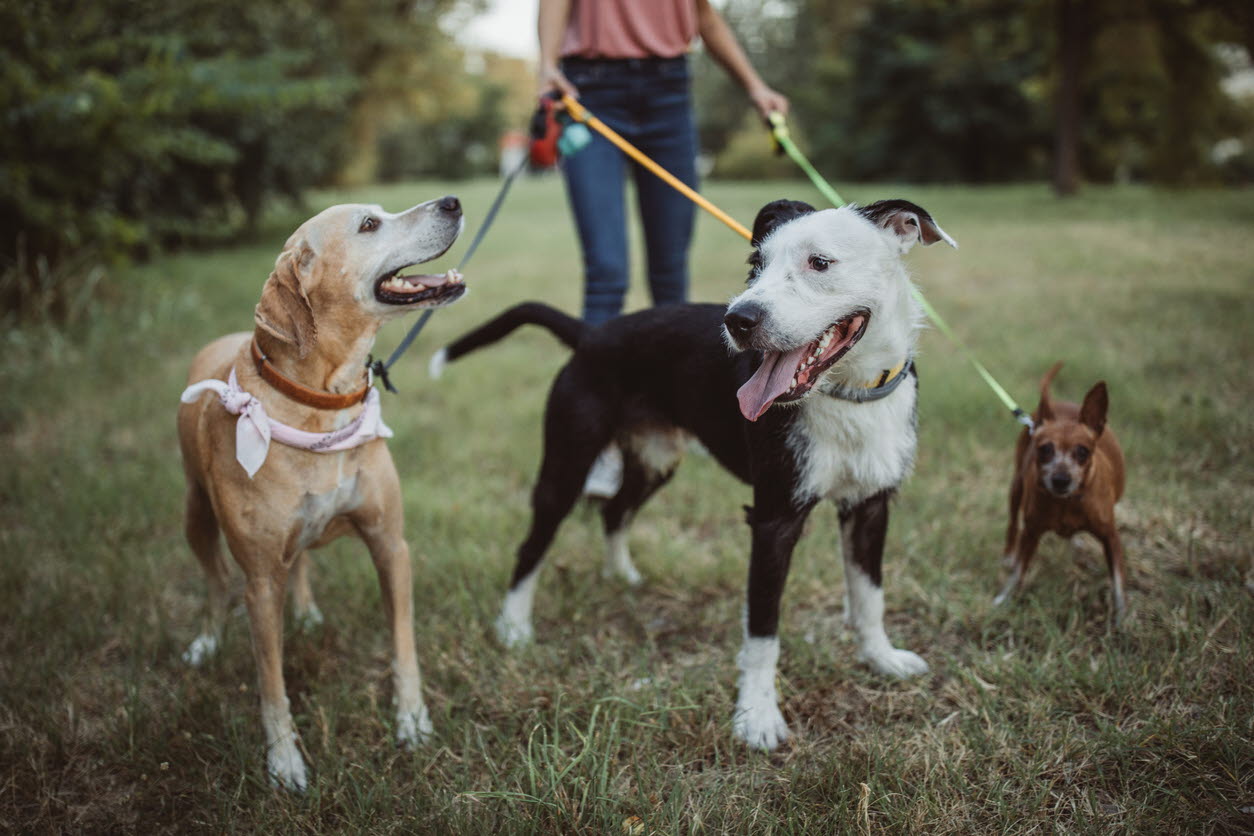The dog walker’s safety guide

Professional dog walking can seem like an animal lover’s dream - a job involving wholesome contact and play with happy dogs, along with natural exercise and time outdoors! However, before offering a dog-walking service, it’s important to establish clear protective protocols to help ensure the safety of all involved.
Good preparation
Before accepting clients, it’s sensible to consider insurance for both yourself and the dogs that will be in your care. Accidents can happen, and it’s important to ensure everyone is protected.
It is also recommended to seek legal counsel in order to help you to create contract documents to be signed by prospective clients and yourself. This is important to establish:
- Your terms of service.
- The pet owner’s responsibilities, such as ensuring their dog:
- Is up-to-date with routine vaccinations, worming, and tick/flea preventions.
- Is not presented for walking if the pet is showing any signs of illness (such as coughing, nasal discharge, or upset tummy signs) or an undiagnosed injury.
- Has up-to-date collar tags and microchip details.
- Protocols for managing potential untoward events e.g. dog injuries that occur on walks. Ensure you confirm the client’s preferred veterinary clinic name and contact information for any medical care required.
- Any special medical or care requirements that the pet may have e.g. known joint problems or other existing health issues.
Lastly, ensure you have sufficient training and experience not only to recognise canine body language and competently handle a variety of dogs, but also to recognise any dog illness or injury and take appropriate action. Basic first aid training (e.g. CPR, dressing superficial wounds) is helpful, but if in doubt, it’s always best to contact the client promptly and recommend veterinary care.
Reducing the chance of accidents
When walking dogs, careful selection of walking conditions is important. Don’t walk dogs in hot or humid weather that could cause heat stress, or in very cold windy weather. Avoid pavement that is too hot for you to comfortably hold your hand on, and other obvious foot hazards such as sharp rocks, broken glass, or oyster shells. Ensure you always bring a large supply of fresh drinking water and clean bowls with you, and offer water regularly.
It’s recommended to keep all dogs on leads unless they are in a securely-fenced dog park, to avoid the possibility of animals getting lost, ingesting toxic plants or rubbish, or drinking stagnant (potentially contaminated) water. Ensure all dogs have a securely-fitting harness or collar.
Experience helps when deciding which dogs are compatible to socialise with each other, but it helps to match energy levels. When initially mixing new dogs, try to have both dogs leads and another experienced person present, so that dogs can be separated quickly if required.
Staying healthy
To reduce the chance of infectious illness passing between dogs, and between dogs and yourself, ensure good hygiene and cleaning protocols, such as:
- Cleaning and disinfecting any shared equipment (e.g. dog bowls, crates) between dog groups.
- Practising proper hand hygiene (washing with soap or using hand sanitiser) after picking up faeces, and after handling dogs.
- Not walking dogs who are showing signs of illness (e.g. diarrhoea, vomiting, coughing or nasal discharge) until their symptoms have resolved.
By following these guidelines, dog walks should stay happy and safe for all involved!
